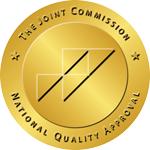What is the link between trauma and addiction?
Trauma comes in many forms. It can affect an individual, a family, and an entire community. Many people who experience trauma don’t understand the significance or impact of trauma in their lives. They may not consider themselves trauma survivors. They may show all the clinical signs of having experienced damaging trauma, but do not believe they have post-traumatic stress disorder (PTSD), which often develops in response to trauma.
It’s not unusual for people to downplay their trauma. They may categorize their experience as a bad memory or simply a tough time they went through. In many cases, people think that because something difficult or negative happened a long time ago, and they don’t think about it every day, it has nothing to do with their lives in the present moment. They cope as best they can and soldier on without complaint – even when their friends, family, and therapist – if they have one – can see plainly how their history of trauma affects their current behavior.
This misunderstanding of trauma and PTSD can have serious consequences. The long-term effects of untreated PTSD include, but are not limited to:
- Depression
- Anxiety
- Alcohol use disorder (alcoholism)
- Substance use disorder (drug addiction)
- Eating disorder
- Insomnia
- Chronic pain
- Autoimmune disease
- Disrupted relationships
- Family problems
- Cardiovascular disease
- Self-harming behavior
- Suicidal ideation
These effects can begin early and last a lifetime. However, not all people who experience them understand they’re connected to trauma.
Why Do People Minimize Trauma?
Trauma survivors include people who’ve been bullied, physically assaulted, or emotionally abused and/or neglected. As we mentioned, many people who experience these things don’t consider themselves trauma survivors. Instead, they think they’ve just been through some tough times, which are now in the past.
An interesting fact about trauma is that it isn’t necessarily defined by the event itself. It’s more about how the individual perceives the experience. Think of it this way: one individual may experience bullying at work but doesn’t perceive the behavior of their boss or colleagues to be that disturbing. Another person may experience the same thing with a completely different take on the incidents and have an entirely different outcome in response. They may develop anxiety, have trouble sleeping, or quit their job. Their self-esteem may suffer. They may avoid places or people that remind them of the traumatic experience.
With all that in mind, let’s dig deeper into trauma, beginning with a clear definition.
Trauma: A Clinical Definition
We hint at the definition above, but it’s important to understand exactly what we’re talking about. Here’s a helpful definition provided by trauma experts at the Substance Abuse and Health Services Administration (SAMHSA):
They go on to define events mental health professionals consider traumatic:
- Natural disasters
- Sexual abuse
- Physical abuse
- Domestic violence
- Witnessing domestic violence
- War, terrorism, political violence
- Medical injury, illness, or procedures
- Community violence
- Neglect or deprivation as a child, adult, or senior
- Kidnapping
- Accidents
- School violence
- Loss of a family member, loved one, or peer
Trauma experts define three distinct types of trauma. All three of these may involve the events or experiences listed above, in varying degrees:
- Acute trauma. Acute trauma is the result of a single incident.
- Chronic trauma. Chronic trauma is caused by repeated and prolonged exposure to traumatic experiences, such as domestic violence or childhood abuse.
- Complex trauma. Complex trauma is caused by repeated exposure to multiple traumatic events of different types.
It’s important to understand that not every person who experiences trauma will go on to develop post-traumatic stress disorder (PTSD). Many will develop low-level anxiety, low self-esteem, and mild depression. In many cases, people who experience these symptoms turn to drugs and alcohol to alleviate the uncomfortable emotions and patterns of thinking associated with them.
It’s also important to understand that effective, evidence-based treatment for PTSD exist and can help people manage the effects disruptive effects of trauma in their lives. We’ll talk about treatment in a moment.
Before we do, we’ll share statistics on the prevalence of trauma worldwide and in the United States.
Prevalence of Trauma
Research on the prevalence of trauma shows surprising results. Here’s are some key points from a survey published by the World Health Organization (WHO) in 2017:
- 70.4% of respondents reported at least one traumatic event in their lifetime
- 31.4% reported experiencing the death of a loved one
- 23.7% reported witnessing or discovering a death or serious injury in another person
- 22.9% reported experiencing physical violence
- 14.0% reported intimate partner violence
- 13.1% reported war-related trauma
Here are the results of a study on trauma prevalence conducted in the U.S. in 2013:
- 89.7% reported at least one traumatic event in their lifetime
- 53.1% reported experiencing interpersonal violence (assault, rape, assault with intent to kill, assault with a weapon)
- 43.7% reported experiencing physical assault
- 44.9% of women
- 42.4% of men
- 29.7% reported experiencing sexual assault
- 42.4% of women
- 15.8% of men
In addition to these statistics about adults, it’s important to understand the prevalence of trauma experienced by children. In the United States, approximately two-thirds of children experience at least one traumatic event before the age of sixteen, twenty percent of high school students experience bullying, seventeen percent experience cyberbullying, and close to twenty percent of children who experience trauma have post-traumatic stress disorder. Research shows a direct relationship between experiencing childhood trauma and developing an alcohol or substance use disorder later in life.
We should point out that though the relationship between trauma and addiction is unmistakable, not everyone who experiences trauma or develops PTSD will develop an alcohol or substance use disorder. The most effective way for people to process trauma and avoid its negative long-term effects is professional mental health treatment.
Treatment for Trauma and PTSD
The Anxiety and Depression Association of America (ADAA) indicates that psychotherapy – in some cases accompanied by medication – is the best way to treat trauma and PTSD. One-on-one sessions with experienced therapists help trauma survivors develop skills to manage their symptoms and cope with them when they arise. Therapy sessions often focus on recognizing and changing patterns of thinking and behavior related to the original trauma. Therapists and patients work together to identify these life-interrupting patterns and replace them with patterns of thought and behavior that are non-disruptive and life-affirming.
The most common types of therapy used to treat PTSD and process trauma include:
- Cognitive Behavioral Therapy (CBT)
- This solution-focused therapy stressed behavioral change. The talk component typically includes specific strategies that a patient can apply right away.
- Exposure Therapy
- Exposure therapy involves a therapist carefully re-introducing a patient to traumatic stimuli – or directing a patient to the memory of traumatic stimuli – in such a way as to minimize its power.
- Eye Movement Desensitization and Reprocessing (EMDR)
- EMDR blends exposure therapy with directed eye movements. This process helps patients change their reactions to traumatic memories and reduce the frequency and intensity of symptoms related to those memories.
Because each person is different, each course of treatment for trauma is different. Techniques that work for one person will not necessarily work for another. Therapists collaborate with patients to find what works for them, then move forward together to develop effective strategies to manage symptoms and mitigate the effect of trauma in daily life.
This is crucial for people in treatment for alcohol or substance use disorders, since they often develop their disordered use of alcohol or substances to alleviate the uncomfortable symptoms of PTSD or early trauma. Evidence shows that when treatment addresses PTSD/trauma and alcohol/substance use simultaneously, outcomes improve – and patients learn to live a life that’s not dominated by their past trauma or present mental health or substance use issues.
The Ridge in Cincinnati offers an inpatient facility to help people suffering from addicts to undergo a complete detox program.


